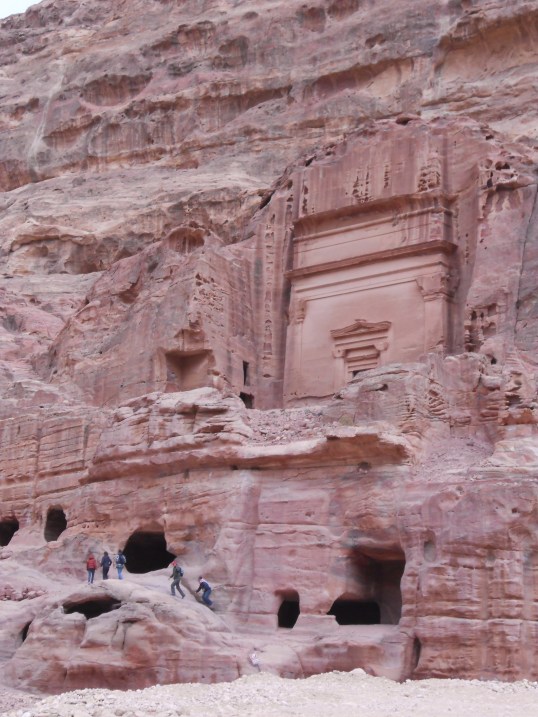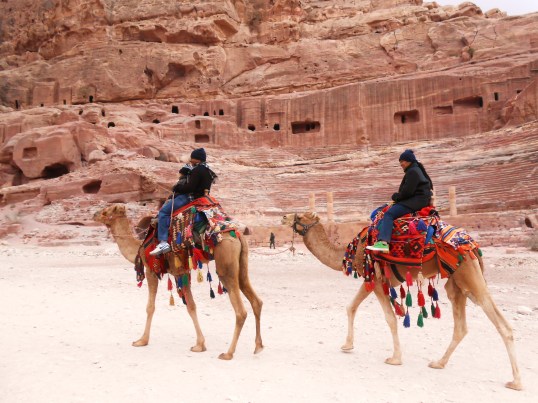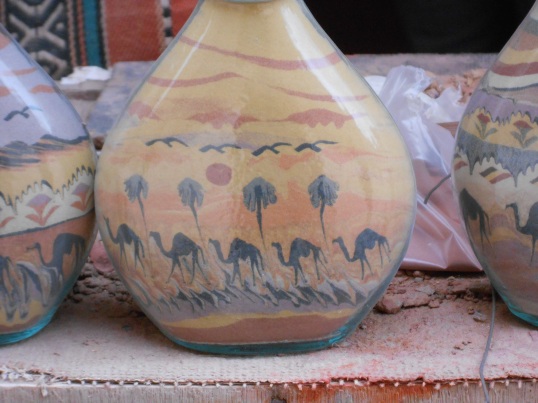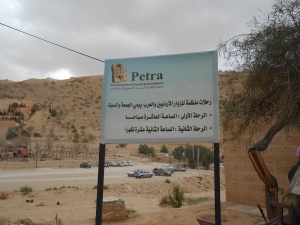Another Look at Petra, Jordan
My last post focused on the Treasury at Petra, Jordan, a masterpiece of architecture carved into red sandstone rock. Petra became a World Heritage Site in 1985 and the New Seven Wonders of the World list included Petra in 2007.
Petra is located in Jordan, a small Middle Eastern mostly desert country with 6.5 million people. Jordan is in the midst of Israel and the West Bank in the west, Syria in the north, and Iraq and Saudi Arabia to the east. This Middle Eastern area is not a quiet area politically, to say the least, although Jordan itself is a peace-loving country. The capital city of Jordan, Amman, in the northern part of Jordan. Petra is a three-hour drive to the south.
Although settled since prehistoric times and once a thriving trading metropolis, Petra is now primarily a popular tourist site. The most famous site is the Treasury, situated directly at the end of the Wadi Musa ravine.
But there are other places of interest in Petra, and the area deserves a good walk-around. Even before you reach the Siq, the route to interior Petra, you see historical buildings and tombs carved into the red sandstone. You can walk in, ride a horse in, or take a horse cart the short distance through the ravine. We chose to ride the horse carts. These are generally available for the handicapped and elderly, but since the tourist load was light on the day we visited, the cart drivers were eager to carry us through the ravine to the Treasury.
Our first glimpse of interior Petra was the Treasury building, the best-known and most photographed site in Petra.

After the Treasury, the ravine widens to a wide stony plain. Here we saw numerous tombs carved into the craggy sandstone hills. Some of these tombs had open fronts, but others had more elaborate carved fronts.
The Roman-designed amphitheatre, capable of seating up to 7000 people, was carved into the mountainside by the Nabataeans during their heyday in 1st century AD. The Royal Tombs can be seen behind the Theatre.
On this windy winter day, cold pierced our multilayers of clothing, and an accommodating gift shop/tea shop owner invited us to warm up by his brazier and drink tea. Happy to get out of the cold wind, we agreed. Of course, this gave us a chance to admire his wares and the beautiful colors of the streaked sandstone of the interior cave walls.
The hot brazier at our feet warmed our hands as we drank our hot tea.
After the hot tea, we needed a restroom and found this surprisingly modern facility (electric lights, running water, flush toilets, toilet paper) in a cave just a few steps from the tea house (in middle of picture below).
This rest stop gave us the opportunity to see the spectacular beauty of the cave walls in this restroom.
Of course, the ubiquitous vendors, hopeful for eager buyers hawked their wares: sand art in bottles, jewelry, and even cold drinks.
Age didn’t seem to matter when it came to selling souvenirs to tourists. This enterprising youngster latched onto one member of our group and followed her along until she bought several hand-made necklaces.
Although we could have spent many more hours here exploring and climbing rocks for better views, we reluctantly headed back to our waiting horse cart for a speedy ride back to modern Wadi Musa town, and then on to Amman in our minibus.
The Last Meow
Yes, I am one of the most photographed cats in Petra. I come from a long line of Royal Cats. Of course, my ancestors have been here longer than that funny building in back of me that some people photograph. What can I say? Some people like ancient buildings, and some people like cats. More power to the cat lovers. They’ve got it right!
Meow for now. =<^;^>=




























